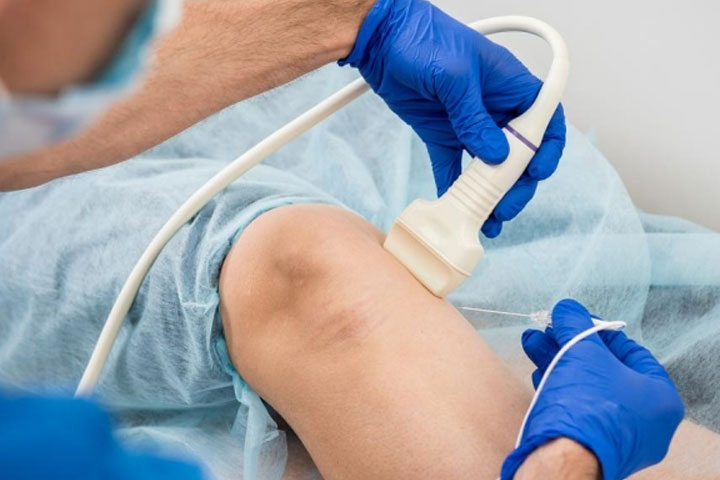About the Treatment
Thoracic facet radiofrequency neurotomy is an outpatient procedure. Patients will wear a gown for the procedure and be positioned lying face down on a procedure table. Patients will receive light sedation if requested before your procedure begins. The upper back area will then be sterilized and numbed with an anesthetic medication.
Your Desert Pain Specialists provider will use a live X-ray image (fluoroscopy) to carefully insert and guide a needle-like tube (cannula) to the targeted medial nerve. A small wire-like electrode (radiofrequency electrode) is inserted through the cannula. To ensure the cannula is in the correct position, a very mild electrical current is delivered through the electrode to the nerve.
The nerve will briefly conduct pain signals and cause a muscle twitch, confirming that the correct nerve has been reached. Numbing medication is then delivered to the nerve in preparation for the treatment
After numbing, heat is delivered through the electrode to the nerve. The heat creates a lesion on the nerve which disrupts the nerve’s ability to send signals about pain. At the end of the procedure, the cannula and electrode are removed. The process can then be repeated for additional nerves that require treatment.


Patients will be monitored for several minutes before being released home. If sedation is performed, a patient should have another person drive them home. Patients should use care while resuming their regular activities over the next several days as it is common to feel soreness at the procedure sites. Your doctor may prescribe pain medication, rest, and instruct patients to use heat or ice packs to ease the pain
It usually takes three to four weeks for the treated nerves to completely die and pain relief to fully begin. Pain may be experienced until the treated nerves are dead.
Thoracic facet radiofrequency neurotomy typically results in pain relief for 9 to 14 months, or longer. About 50% of people experience pain relief for as long as two years. Over time, the nerves will grow back (regenerate) however some people will not experience pain again. If you experience pain, contact your Desert Pain Specialists provider to discuss your options to repeat the treatment.
